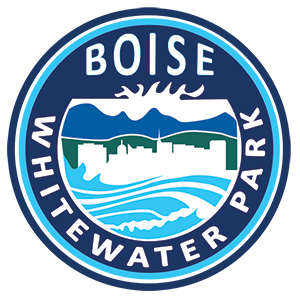Park Modifications Projected to Improve Waves
Last summer, Boise Mayor Dave Bieter joined whitewater enthusiasts, donors and volunteers to dedicate the new Harry W. Morrison Dam, the first phase of the Boise River Park. Since then, the dam, formerly known as the Thurman Mill diversion, has been popular with paddlers and spectators, although officials agree with paddlers that further adjustments to the feature are necessary.
The structure creates waves utilizing two adjustable features or WaveShapers. Upon its completion, the City hired wave technicians responsible for adjusting the movable features on each WaveShaper to create waves of varying heights.
Early on, it was clear that, while the WaveShaper on the Garden City side of the dam functioned well, under most conditions, the one near the Boise shore did not, largely because of the two concrete walls added during construction to bolster the structure. The WaveShaper created a wave tucked too far in between the two walls to be accessible under low water flows.
The City decided to modify the feature, slightly, to correct this problem. Early this spring, while the water was low, workers retrofitted the WaveShaper. The modifications were intended to slow the water coming over the dam and push the wave downstream. Unusually low water flows in the Boise River since that time have made it difficult to determine if the modifications were successful. The City plans on making further modifications to the feature while the water remains low.
WaveShaper designer Rick McLauglin of McLaughlin Whitewater Design Group of Colorado is confident that the modifications will ultimately produce better waves in various river conditions. But he says after each adjustment is made, time must pass while the effects of the modifications are observed under different river flows.
Both McLaughlin and City officials say they expected some modifications would be necessary for each structure after construction.
In addition to serving as a signature play feature of what will one day be a quarter-mile river park, officials say the dam has performed well in serving several key functions:
- As an irrigation diversion, the dam is accessible and adjustable to serve Thurman Mill Canal Company customers.
- It accommodates what is at times a four foot drop in the river without altering the surrounding 100-year floodplain – a requirement, Designers say, limited design options for a play feature.
- It has improved safety for all river users.
Design work for the next phase of the Boise River Park will be contracted in the coming months as the adjacent Esther Simplot Park continues to develop. At that time, the volunteer group, Friends of the Park, say they will launch a new fundraising effort to complete the project. The City of Boise is working with Simplot family representatives on plans and permits, with construction anticipated to begin in the winter of 2014.
